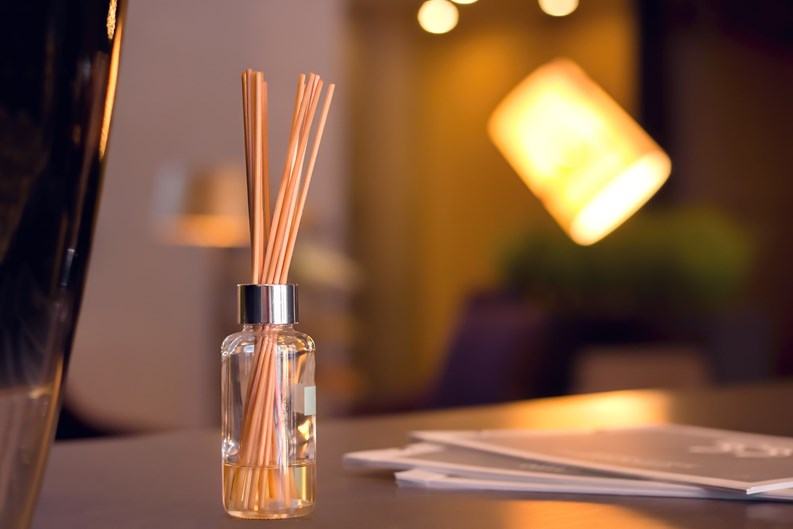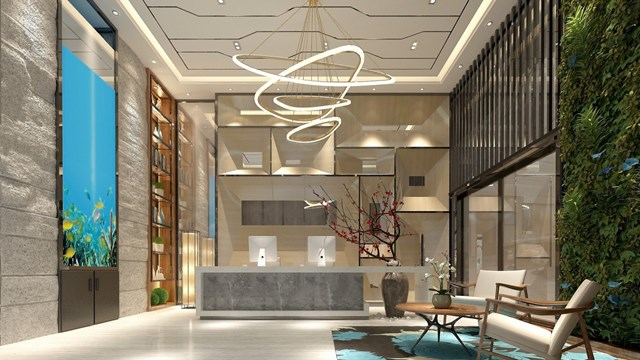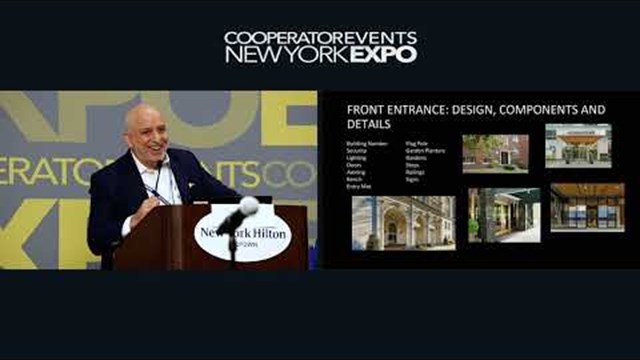As winter approaches, we make changes to our environments for both aesthetic and practical reasons. With less sunlight, cooler temperatures, and messier weather, lobbies, hallways and other public areas require extra attention to keep them at their peak look and performance. In addition, this year, with the looming continuation of the COVID-19 pandemic, the right atmosphere is even more important for both the physical and mental health of co-op and condominium residents.
Practical Considerations
Marilyn Sygrove, principal of Manhattan-based interior design firm Sygrove Associates Design Group, offers some ideas on how to tastefully prepare for rain and snow. “The most obvious and conventional items to combat inclement weather in our buildings are bad-weather mats to keep floors clean and safe, and umbrellas and umbrella stands,” she says. These basic tools reduce the risk of slip-and-fall accidents inside lobbies, as well as keeping damaging salts and grime off our floors.
“Mats used correctly make for safe lobbies,” explains Sygrove. “Wet floors are a slippery hazard, but bad-weather mats are not intended to be down 100% of the time, except where there are insets in the vestibule. Good weather monitoring by staff will allow them to lay the mats down at the appropriate times.”
“The good news is that there are a variety of mats to choose from,” says Sygrove, who suggests some factors to consider when choosing mats: “Nylon with both high and low textured patterns are the best type of mats to remove moisture, salt, and grit,” she says. “The higher pile dries your foot covering. Grit scrapes off and falls to the lower level pile. These mats can be vacuumed and hosed down - and from a design point of view, they can include your logo, addresses and sport interesting borders, and are available in a variety of colors”
Sidewalk Heating Elements
In addition to making a treacherous sidewalk surface melt away, there is no better way to preserve your lobby than installing a heating element under your sidewalk. While widely used in luxury hotels in ski areas out West, the technology has not been widely adapted in New York City - at least not yet. That said, the number of luxury buildings installing them is increasing. “No need to shovel or use salts that are tracked inside your lobby,” says Sygrove. “Even developers of new residential buildings are looking at this as a building amenity. So why be left behind?”
The Scent of Cleanliness and Tranquility
Sygrove suggests another inexpensive consideration to improve both the physical and psychological atmosphere of your public spaces: scent. Adding an aromatic, olfactory element to your lobby and common areas might be the welcoming sensory experience stressed-out residents need these days. From automatic, wall-mounted diffusers programmed to emit a puff of fragrance at fixed intervals to old-fashioned scented candle jars (which of course should be placed well away from anything flammable, and never left unattended), adding pleasant aromas to your space can be reminiscent of the welcoming scent of a fresh-baked apple pie at grandma’s house.
“Scents are important because subliminally, they send a message about the building,” explains Sygrove. “Which is important for both residents and prospective residents. Visual and tactile components are very important in design, but scent is about cleanliness, freshness and calm. Those terms usually fall into the maintenance category, but are all complementary to design. For example; we always hear about bad smells in the trash room. We may not hear from residents as to how good the room smells when we use scent to correct the problem, because they aren’t offended by bad smells.
If you choose to use a scent,” Sygrove continues, “pick something light and fresh - nothing too heavy. Evergreen is a great example for winter. It’s become a very common practice in hotel properties. The scent will also relieve stress; and who wouldn’t like a bit of that now? Lavender - be it in the form of an oil diffuser, a spray, or for instance, is suggested to elicit calm.” This little trick is both fun and inexpensive, and allows you to change the mood of your lobby or common area without lifting a single hammer.










Leave a Comment